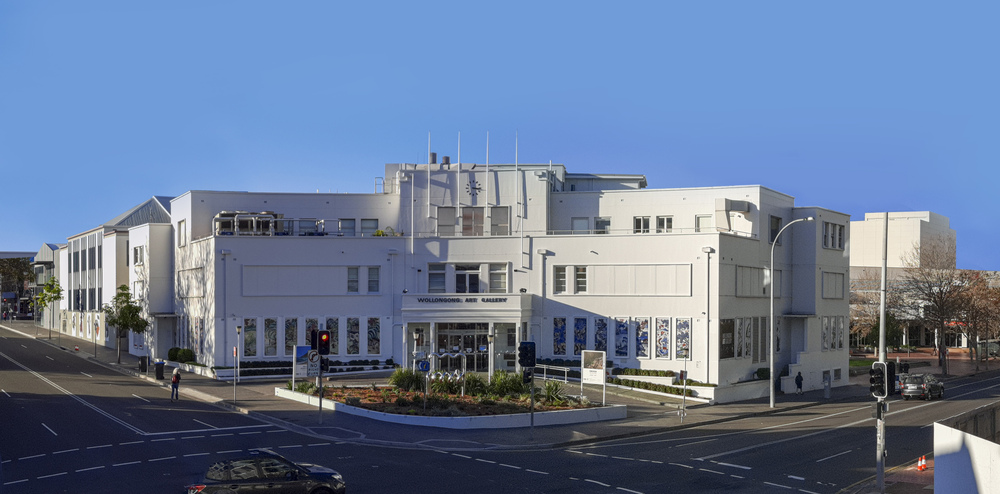Wollongong City Council is working with key stakeholders from the Sydney Jewish Museum and the NSW Jewish Board of Deputies on next steps for Wollongong Art Gallery and its collections following the receipt of a detailed report exploring the personal history of benefactor Bob Sredersas.
Council commissioned the report by Sydney Jewish Museum’s Resident Historian Emeritus Professor Konrad Kwiet after allegations were made earlier this year about Sredersas’ past during World War II, before he moved to Wollongong in 1950.
The detailed report was received by Council late last week, and the findings within it were discussed at a meeting today, Wednesday 22 June, between Wollongong City Council and the Sydney Jewish Museum.
“This has been a very productive and informative process and I thank Professor Konrad Kwiet, along with the representatives from the Sydney Jewish Museum for supporting Council and investigating the allegations made about Sredersas in such a comprehensive and considered way,” Wollongong City Lord Mayor Councillor Gordon Bradbery AM said.
“Our intention throughout this process has been to gain a deeper understanding of the man who donated his personal collection of artworks to the City of Wollongong in 1978, and to have a clear direction – whatever the outcome of the investigation – on what the next steps should be to acknowledge the information gathered through this. I feel that through this process we’re now able to work for a respectful and well considered outcome.
“The Sydney Jewish Museum along with the NSW Jewish Board of Deputies have shared with us that they view this investigation and the circumstances surrounding the allegations as an important opportunity for education and empowering our community about the Holocaust, the Nazi era and Mr Sredersas’ past.
“We have an opportunity to take a leadership role in a genuine acknowledgement and education about our history and we want to get that right.”
The report researched Sredersas’ wartime record before he arrived as a Lithuanian migrant to Australia in 1950.
It confirmed that Sredersas served as an intelligence officer for the Nazi security service, which was known as the Sicherheitsdienst or SD, while Lithuania was under German occupation. His role within the SD was to implement Nazi policies and rules in German-occupied Lithuania which means he can be classified as a Nazi collaborator. No record has been found, to date, that showed he was directly involved in the Holocaust itself or other acts of genocide.
Wollongong City Council General Manager Greg Doyle welcomed the comprehensive report saying it provided compelling and valuable information to Council.
“All the way through this investigative process we have had one goal in mind – to achieve the most appropriate and considered outcome for our community, the gallery as well as visitors and the wider Jewish community in Australia,” Mr Doyle said.
“The comprehensive research undertaken by Professor Kwiet for this report is invaluable. The history of our gallery, and the city’s relationship with Sredersas will change from this knowledge. We will respond to this in a way that is caring, sensitive and culturally appropriate to all involved. Just how we will do that will now be Council’s immediate focus, and we will keep our community updated as we move through this process.”
The focus of today’s meeting was to consider an appropriate way forward for Wollongong Art Gallery and its collection. From these discussions Council will continue to work with the key stakeholders on a series of actions.
“While Wollongong City Council carries the overarching responsibility for Wollongong Art Gallery, we are very mindful of our role as a custodian on behalf of the community,” Cr Bradbery said.
“What we have learnt through this process adds a new layer of complexity to the Gallery’s history. We’re committed to ensure this history is clearly transparent in the future and reflected in a sensitive and appropriate way.”
Cr Bradbery said the report and an ongoing dialogue with the Sydney Jewish Museum provides a direction for Council and the organisation would continue to consider how Sredersas’ history, his donation and legacy would be represented into the future, including exploring an ongoing partnership for education opportunities.







